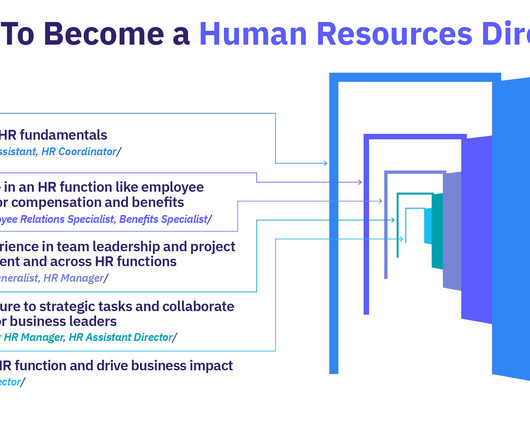Human Resources Director: Job Description, Skills & Salary
Analytics in HR
OCTOBER 10, 2023
A Human Resources Director is responsible for creating and implementing HR policies and activities of the organization. They also manage the HR staff, overseeing all employee-related initiatives, from recruitment and onboarding to managing performance, promotion, and conducting exit interviews.
















Let's personalize your content